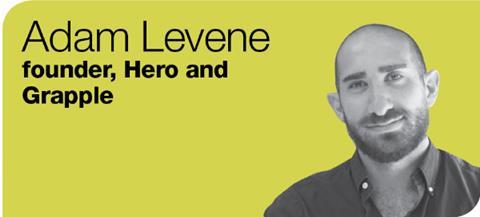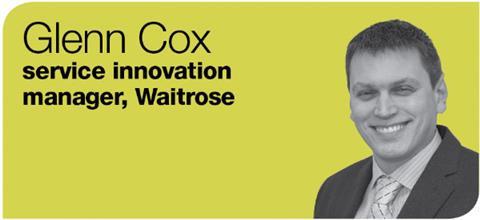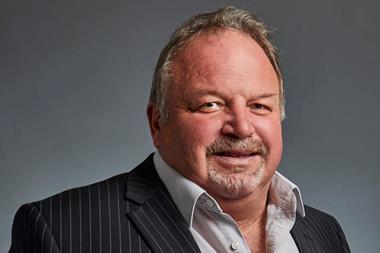Three innovators from outside the insurance industry discuss their approaches to change and how they improved the customer experience. All three will speak at the Insurance Times ID2016 conference


Kass Hussain specialises in creating technology-driven new identities for established large businesses
You have innovated at some of the country’s largest corporations. What limitations did you find along the way?
An established company is all about protecting revenue. You have a product or service and it’s all about removing the risk. You bring in people to maintain the equilibrium and cause incremental growth and this is integral, but it is the absolute antithesis of what you need to innovate.
You need the mad people who are trying to find a new business model, rather than the sane people who are trying to protect it. No one person is to blame for this, but it is basic corporate dilution.
So what do firms with such barriers need to do to innovate?
What you need are people that are risk takers, entrepreneurs who will try things out. It has to be fluid and nimble. Culturally, the rules are so different.
Most of the people at Hive [British Gas’s connected home offering] don’t know about energy, but I think that is why we were hired. They all have entrepreneurial and technology backgrounds. These are the kind of people who wouldn’t really fit in at a large corporate. You have to find a balance between the two.
How have firms found this balance, in your experience?
When I was at O2, we were already a large telco corporate and a lot of people didn’t want to buy into that kind of brand. At Sky, we saw huge competition coming from on-demand services such as Netflix. We knew we had to compete, but we knew that there were a lot of people who just wouldn’t buy the Sky brand. We had to go after the competition but couldn’t do it under this corporate structure.
Therefore, at both firms we innovated separately to the main corporate brand. We created almost separate, innovation entities (Giffgaff and NowTV) where we could try things out, experiment and really push the boundaries that the corporate brand simply couldn’t do.

Adam Levene runs business messaging service Hero. He has built smartphone apps for some of the UK’s biggest banks, including Lloyds
Technology is having a huge influence on modern life. Where do you stand on how companies should harness innovation?
I don’t believe in using technology for automation. The point of technology nowadays is to empower the human to interact better. Any app that automates a process is ultimately doomed to fail, because true innovation comes in making the human work better.
Take banking for example. It used to be seen as a boring profession, but now the whole sector is seen as fascinating. Fintech has driven this because the apps engage the person with the sector again, and I think if insurance embraces customer-facing technology it can do the same.
In your former job at Grapple, you innovated for big firms. How did you do this?
Our whole business was around helping FTSEs, the banking sector, the sports sector, to find out what they should be doing with the smartphone to help their customers. When Apple and Android took over the smartphone market it suddenly opened up a huge opportunity for companies to engage with their customers, and we seized on it.
We created some of the first banking apps, as well as some apps for hotels that let you book, check in and even control your lighting. The whole point was to enable business to offer incredible digital experiences, but with customer service at the heart. Any firm can look at what they offer customers, then look at apps and can genuinely revolutionise their entire offering.
How do you think these forms of innovation can benefit insurance?
Insurance is in a great position. It can learn from sister industries that have already experienced digital disruption. It can really start to ignite cultural change; it can’t just be about financial gain. Digital can really bring back why people want to work in insurance, and that is helping people in a time of need.

Glenn Cox has helped retail giant Waitrose and sister brand John Lewis take customer service levels to new heights
What helped you achieve customer service success at Waitrose and John Lewis?
One thing we did that made a real difference was to look outside of our industry. Rather than look at our rivals and wonder whether what they were doing was right or wrong, and basing our models on that, we looked simply at the pinnacles of customer service. We met with the likes of British Airways, Claridges, Metro Bank and Virgin, for example.
To excel in customer service, you really have to go past the closed world of your own industry. It might seem disruptive, but to succeed you often need radical change.
How do you see innovation playing a role in customer service?
When people talk about innovation, their minds ultimately jump towards technological advancement and digital growth. And rightly so. But there is much more to it than that. We are really pushing technology, both online and instore. And technological advancement needs the customer service to match it.
Customers using technology will need help the first time, or when something goes wrong. The bottom line is that technology will and must grow, but customer service will always remain.
Is innovation still ultimately about the human rather than the digital when it comes to customer service?
Completely. When it comes to customers, it is all about how they feel when they leave the shop. This ultimately comes from the customer’s face-to-face experience.
We have thrown out all of our ‘one size fits all’ training methods and created some innovative staff specific training tailored to each team member. They engage with the branch and want to come to work, which will always deliver better customer service results in the long run.

Find out more about the Insurance Times Innovation and Disruption Conference 2016 here
Hosted by comedian and actor Tom Allen, 34 Gold, 23 Silver and 22 Bronze awards were handed out across an amazing 34 categories recognising brilliance and innovation right across the breadth of UK general insurance.













































No comments yet